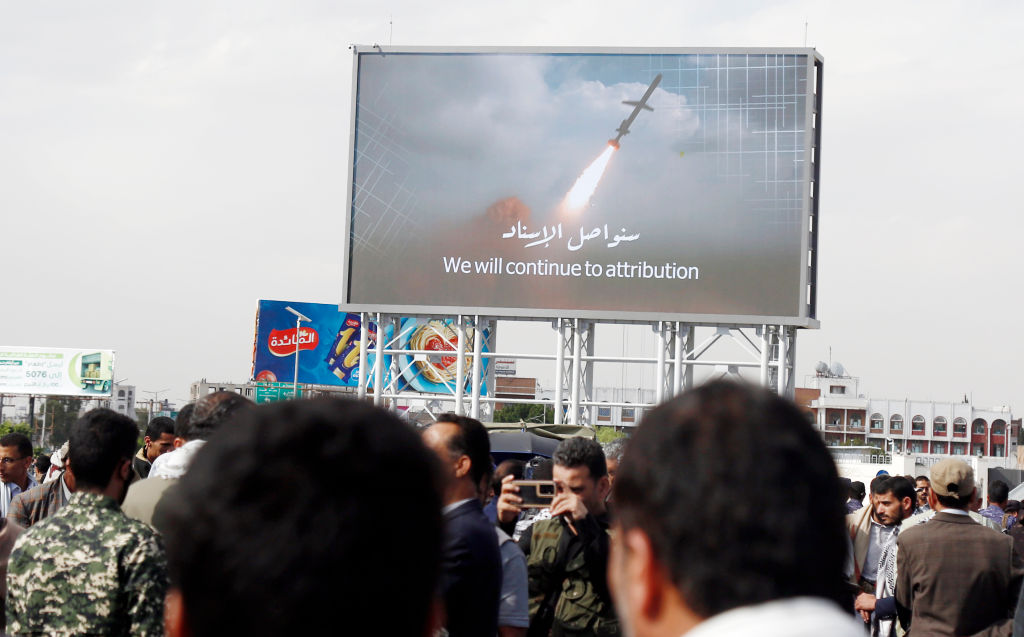On 27 March, the Houthis launched two ballistic missiles at Israel. It also reportedly launched ballistic missiles, cruise missiles, and long-range one-way attack drones at US Navy warships in the region, including the USS Harry S. Truman aircraft carrier.
The attack likely came in response to a series of US air and naval strikes against Houthi forces and military infrastructure in Yemen. These US strikes are part of a broader effort to degrade the Houthis’ ability to threaten international shipping in the Red Sea.
What is notable about the Houthi attack is that it occurred in broad daylight. While the exact motivation is unclear, the timing may have been intended to signal that the Houthis remain undeterred and capable of operating openly, without having to rely on the cover of night. That said, the relatively small number of missile projectiles launched – especially in comparison to earlier Houthi missile strikes against Israel and Western forces operating in the region – suggests that Houthi commanders were aware of the heightened risks and opted for a quick strike requiring minimal preparation and launch time.
According to a Houthi military spokesperson, the attack involved one Zulfiqar ballistic missile targeting Ben-Gurion airport, and one Palestine 2 ballistic missile targeting a military site south of Tel Aviv.
The Zulfiqar, a solid-fuel short-range ballistic missile, entered service with Iran’s armed forces around 2017 and is estimated to have a range of approximately 700 kilometres. Given the greater distance between Yemen and Israel, it is likely that the Houthis employed a longer-range variant, which Iran is known to have developed and may have transferred to its regional proxies, including the Houthis. The Zulfiqar carries a 500-kilogram conventional payload, though extended range variants may carry reduced payloads to achieve the necessary distance.
In contrast, the Palestine 2 is likely a domestically produced Houthi medium-range ballistic missile. Though – as with other Houthi missile programmes – it has almost certainly benefited from substantial Iranian technical assistance in both development and manufacturing. The liquid-fuel missile is estimated to have a range between 1,000 and 2,000 kilometres and carries a conventional payload of unknown size, though it is likely in the 300–500-kilogram range. The system is believed to be based on a Soviet-origin Scud-C or Scud-D short-range ballistic missile that has been extensively modified to meet Houthi range requirements.
The Israel Defence Forces (IDF) have confirmed the launch of ballistic missiles at Israel, triggering air-raid sirens across central regions, including Jerusalem. According to reports, both missiles were intercepted before they entered Israeli airspace.
Following the attack, photo imagery emerged showing missile debris – specifically booster sections – likely belonging to a THAAD missile defense interceptor. THAAD is a US missile defense system designed to intercept medium- to intermediate-range ballistic missiles by guiding a missile directly into the incoming warhead.
The United States deployed a THAAD battery to Israel in October 2024, following repeated missile strikes by Iran. The deployment aimed not only to reassure Israel of continued US support but also to assist the IDF in replenishing its interceptor stockpile, which – at that point – had been significantly depleted. If today’s interception event is confirmed, it would mark the second time that an American THAAD interceptor has successfully engaged a ballistic missile target.
At the time of writing, much less information is available regarding the reported attack on US Navy warships operating in the Red Sea. The US Navy has so far neither confirmed that an attack occurred nor said if any missiles were intercepted.
In principle, the Houthis maintain a relatively large and diverse arsenal of long-range drones, cruise missiles, and ballistic missiles capable of hitting maritime targets. These systems have previously been used to disrupt international shipping by striking commercial cargo ships.
While similar systems have also been launched at US and allied naval vessels in the past, they have achieved little. Most notably, this is down to their technical limitations in terms of accuracy and stealth, which means they pose a relatively small threat to western warships equipped with modern missile defence capabilities.
That said, this and other recent missile strikes by the Houthis demonstrate that they continue to pose a credible missile threat in the region, even as the United States expands its efforts to degrade their missile production and deployment capabilities.







Comments